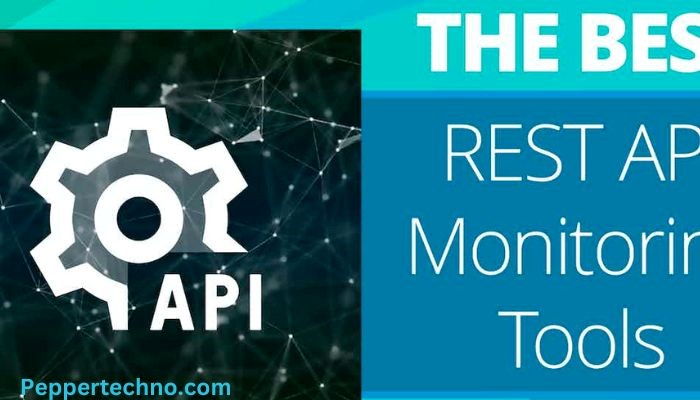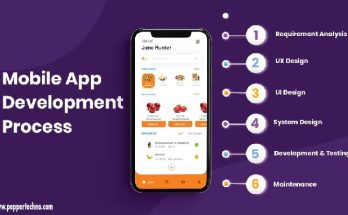Android App Rest Api Monitor: The Importance of REST API Monitoring
In today’s digital age, mobile applications have become an integral part of our lives. From ordering food to booking a ride, there is an app for almost everything. However, behind the scenes, these apps rely on a technology called REST API (Representational State Transfer Application Programming Interface) to communicate with servers and retrieve data. The success of an app heavily depends on the performance and reliability of its REST API. This is where REST API monitoring comes into play.

Introduction to REST API Monitoring
REST API monitoring refers to the process of continuously monitoring and analyzing the performance and availability of an app’s REST API. It involves tracking various metrics such as response time, error rates, and throughput to ensure that the API is functioning optimally. Monitoring tools collect data from the API endpoints and provide real-time insights into its performance.
Understanding the Importance of Monitoring Your App’s REST API
Monitoring your app’s REST API is crucial for several reasons. Firstly, it helps you identify and resolve issues before they impact your users. By monitoring key metrics such as response time and error rates, you can quickly detect any anomalies and take proactive measures to address them. This ensures that your app remains reliable and provides a seamless user experience.
Secondly, monitoring your app’s REST API allows you to optimize its performance. By analyzing the data collected from monitoring tools, you can identify bottlenecks and areas for improvement. This enables you to make informed decisions about optimizing your API endpoints, improving scalability, and enhancing overall performance.
The Benefits of REST API Monitoring for Your App’s Success
Effective REST API monitoring offers several benefits for your app’s success. Firstly, it helps you maintain a high level of availability. By monitoring the uptime and response time of your API endpoints, you can ensure that your app is accessible to users at all times. This is particularly important for apps that rely heavily on real-time data, such as messaging or navigation apps.
Secondly, monitoring your app’s REST API allows you to detect and resolve issues quickly. By tracking error rates and response times, you can identify any performance degradation or errors in real-time. This enables you to take immediate action and minimize the impact on your users.
Furthermore, monitoring your app’s REST API helps you optimize its performance. By analyzing the data collected from monitoring tools, you can identify areas for improvement and make informed decisions about optimizing your API endpoints. This can lead to faster response times, reduced latency, and improved overall user experience.
Common Challenges Faced in REST API Monitoring
While REST API monitoring offers numerous benefits, it also comes with its own set of challenges. One common challenge is the sheer volume of data generated by monitoring tools. With multiple API endpoints and millions of requests, it can be overwhelming to analyze and interpret the data effectively.
Another challenge is the dynamic nature of APIs. As your app evolves and new features are added, the API endpoints may change or be deprecated. This requires constant monitoring and updating of your monitoring tools to ensure accurate data collection.
Additionally, monitoring APIs that rely on third-party services can be challenging. These services may have their own performance issues or downtime, which can impact your app’s API. It is important to have visibility into these dependencies and monitor their performance as well. To overcome these challenges, it is essential to have a robust monitoring strategy in place and leverage the right tools and techniques.
Best Practices for Effective REST API Monitoring
To ensure effective REST API monitoring, there are several best practices that you should follow. Firstly, it is important to define clear monitoring objectives and metrics. Identify the key performance indicators (KPIs) that are most relevant to your app and focus on tracking those metrics. This will help you prioritize your monitoring efforts and avoid information overload.
Secondly, it is crucial to establish a baseline for your API’s performance. By collecting historical data and establishing benchmarks, you can easily identify any deviations from normal behavior. This allows you to set thresholds and receive alerts when performance issues arise.
Furthermore, it is important to monitor your API from multiple locations to ensure accurate and comprehensive data collection. This helps you identify any regional performance variations and provides a holistic view of your API’s performance.
Tools and Techniques for Monitoring Your App’s REST API
One popular approach is synthetic monitoring, where simulated requests are sent to the API endpoints at regular intervals. This allows you to proactively monitor the availability and performance of your API.
Another technique is real user monitoring (RUM), which involves tracking the actual user interactions with your app’s API. By instrumenting your app with RUM tools, you can collect data on user behavior, response times, and errors in real-time.
Additionally, log analysis tools can be used to analyze the logs generated by your API endpoints. This helps you identify any errors or performance issues and provides valuable insights into the root cause of the problem. Each tool and technique has its own pros and cons, and it is important to choose the ones that best suit your monitoring needs.
Key Metrics to Track in REST API Monitoring
When monitoring your app’s REST API, there are several key metrics that you should track. These include response time, error rates, throughput, and latency. Response time measures the time taken for the API to respond to a request. It is an important metric as it directly impacts the user experience. A high response time can lead to frustrated users and increased abandonment rates.
Error rates track the percentage of requests that result in errors. Monitoring this metric helps you identify any issues with your API endpoints and take corrective action. Throughput measures the number of requests processed by your API per unit of time. It is an important metric for assessing the scalability and capacity of your API. Latency measures the time taken for a request to travel from the client to the server and back. Monitoring latency helps you identify any network or infrastructure issues that may be impacting your API’s performance.
How to Analyze and Interpret REST API Monitoring Data
Analyzing and interpreting REST API monitoring data is crucial for improving your app’s performance. Firstly, it is important to establish a baseline for each metric and set thresholds for acceptable performance. This allows you to easily identify any deviations from normal behavior.
When analyzing the data, look for patterns and trends over time. Are there any specific times of the day when performance degrades? Are there any specific endpoints that consistently have high error rates? By identifying these patterns, you can prioritize your efforts and focus on areas that require immediate attention.
Furthermore, it is important to correlate the data with other factors such as user behavior or infrastructure changes. For example, if you notice a sudden increase in error rates, check if there were any recent code deployments or changes to the infrastructure that may have caused the issue.
Integrating REST API Monitoring into Your App Development Process
To maximize the benefits of REST API monitoring, it is important to integrate it into your app development process. Firstly, make monitoring a part of your app’s lifecycle from the early stages of development. This allows you to identify and address any performance issues before they impact your users.
Secondly, establish clear communication channels between your development and operations teams. This ensures that any issues identified during monitoring are quickly communicated and resolved.
Furthermore, automate your monitoring processes as much as possible. Use tools that provide real-time alerts and notifications when performance issues arise. This allows you to take immediate action and minimize the impact on your users.
Conclusion:
In conclusion, effective REST API monitoring is crucial for the success of your app. By continuously monitoring and analyzing the performance and availability of your app’s API, you can ensure a seamless user experience and optimize its performance. By following best practices, leveraging the right tools and techniques, and tracking key metrics, you can proactively identify and resolve any issues before they impact your users. Integrating monitoring into your app development process ensures that it becomes an integral part of your app’s lifecycle. By maximizing the potential of your app with effective REST API monitoring, you can stay ahead of the competition and deliver a superior user experience.



